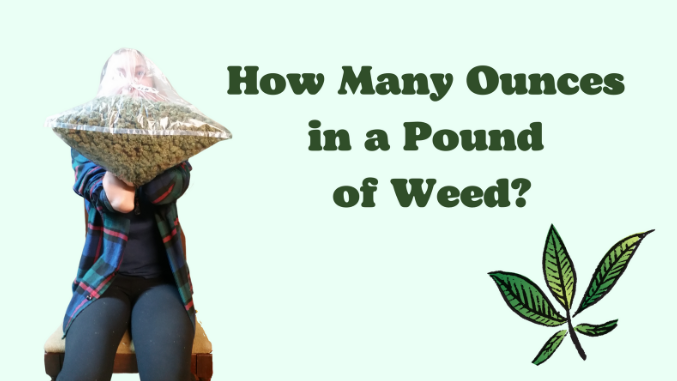How Many Ounces in a Pound? Easy Guide for Everyone

How many ounces in a pound is a question that many people ask when cooking, baking, or learning about weight. In the United States, pounds and ounces are common units for measuring weight, and knowing the conversion can save you time and mistakes in recipes or projects. Understanding this is simple and can be very useful in everyday life. Whether you are weighing flour for a cake, measuring meat for a recipe, or just curious, this small bit of knowledge will help you in many ways. It is also important for kids to learn, so they can get better at numbers and measurements.
How many ounces in a pound is also a question that can help in shopping, school projects, and even while watching sports where weights are discussed. A pound has a fixed number of ounces, so once you know it, you can use it again and again. This makes cooking easier, lets you compare products quickly, and helps you follow instructions without confusion. For example, when you buy cheese or fruits, sometimes the price is by the pound, and sometimes by the ounce—knowing the difference means you can compare prices better. It’s not just about math—it’s about making smarter choices in daily life.
What Does a Pound Mean in Simple Words
A pound is a unit of weight mostly used in the United States and a few other countries. It is part of the Imperial system, which is different from the Metric system used in many other places around the world. In very simple terms, a pound is a way to measure how heavy something is. You might see it written as “lb” on packages in the store.
For example, if you have a loaf of bread that says “1 lb” on the label, that means it weighs one pound. This measurement is often used for food, pets, or even a person’s body weight in the U.S. Learning about pounds helps you better understand weight and how to use it in daily life.
How Many Ounces in a Pound – The Exact Answer
The exact answer is: 1 pound = 16 ounces. This is a fixed number that never changes, so you can always rely on it. No matter what you are measuring—sugar, meat, or even something like gold—if it weighs one pound, it will be exactly 16 ounces.
Remembering this is easy if you think of it like money. If a pound was like a dollar, then an ounce would be like a coin, and you would need 16 coins to make one dollar. Once you remember “16 ounces in 1 pound,” you can quickly do the math for bigger or smaller weights.
Why This Conversion Is Important in Daily Life
Knowing how many ounces in a pound can help you in so many daily tasks. When cooking, a recipe might say “use 8 ounces of cheese,” but the cheese you bought is labeled in pounds. Without knowing the conversion, you might add too much or too little.
It’s also important for shopping. Sometimes stores price items per pound and other times per ounce. Knowing the conversion helps you figure out which option is cheaper. Even in hobbies like fishing, baking, or sewing, weight matters a lot. By learning this, you save money, avoid mistakes, and make better choices.
Easy Ways to Remember Ounces in a Pound
Here are a few fun tricks to remember:
- Sweet 16 – Think about a party with 16 guests. That’s how many ounces are in 1 pound.
- Half is 8 – Half of a pound is always 8 ounces, so it’s easy to break it down.
- Double 8 – If you remember that 8 ounces is half a pound, then double it for 16 ounces in a pound.
Once you practice using ounces and pounds, this will become second nature.
Fun Examples of Ounces and Pounds in Real Life
Let’s look at some examples so it feels more real:
- A loaf of sandwich bread is often 1 pound (16 ounces).
- A can of soda is about 12 ounces, so it’s less than a pound.
- A bag of sugar is often 4 pounds, which equals 64 ounces.
- A newborn baby might weigh around 7 pounds, or 112 ounces.
When you think of pounds and ounces in things you use every day, it’s easier to understand and remember.
How Many Ounces in a Pound for Cooking and Baking
Cooking and baking often need exact measurements. Too much or too little of an ingredient can change how a recipe turns out. If a recipe calls for 1 pound of flour, that’s 16 ounces. If it calls for half a pound of butter, that’s 8 ounces.
Sometimes recipes use ounces for small amounts because it’s more accurate. Knowing how to switch between ounces and pounds means you can follow recipes from different sources without confusion. It also helps you adjust recipes to make more or less food.
Pounds and Ounces in Shopping – Save Money with Knowledge
Grocery stores sometimes use pounds and ounces differently for pricing. For example, meat might be priced per pound, but cheese might be sold in an 8-ounce block. If you know that 8 ounces is half a pound, you can figure out the price per pound for the cheese and compare it to the meat.
This skill helps you find better deals. You’ll also avoid buying more than you need or paying too much just because the label looks confusing. Being smart about conversions can actually save you money over time.
Quick Tips to Convert Pounds to Ounces Without a Calculator
You don’t always need a calculator to convert pounds to ounces. Just remember:
- Multiply pounds by 16 to get ounces.
- Divide ounces by 16 to get pounds.
Example: If you have 3 pounds of apples, multiply 3 × 16 = 48 ounces.
Example: If you have 40 ounces of chicken, divide 40 ÷ 16 = 2.5 pounds.
Once you do this a few times, it becomes quick and easy.
Conclusion
Knowing how many ounces in a pound is a small but powerful piece of knowledge. It’s not just for cooks—it’s useful for shopping, hobbies, and even understanding everyday conversations about weight. Remember that 1 pound always equals 16 ounces, and with this, you can make better decisions, save money, and follow instructions more confidently.
FAQs
Q1: Is 1 pound always 16 ounces everywhere?
Yes, in the U.S. and countries using the Imperial system, 1 pound is always 16 ounces.
Q2: What about fluid ounces?
Fluid ounces measure volume, not weight, so they are different from ounces used for weight.
Q3: Why do some countries not use pounds?
Many countries use the metric system, where weight is measured in grams and kilograms instead of pounds and ounces.





